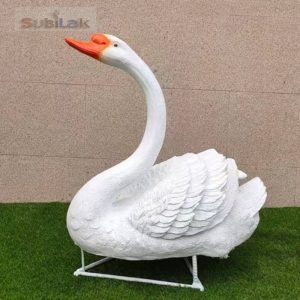The picture shows a gold fiberglass P-40 fighter model, which is a scaled-down version of the actual fighter size. It is generally used for exhibition in the Science and Technology Museum of the Aviation Museum. It is a single-seat, single-engine, straight-wing piston fighter developed by the American Curtiss Company, which played an important role in World War II.

– Research and development background: In the late 1930s, the US Army Air Force needed a new fighter. Curtiss improved and designed the P-40 based on the original P-36 fighter.

– Appearance features: It adopts a single-wing layout and an all-metal semi-monocoque fuselage. The iconic “shark mouth” paint in the picture makes it highly recognizable. This paint is to psychologically deter the Japanese army.
– Combat application: It was widely used in many battlefields in World War II. On the Chinese battlefield, the Flying Tigers drove the P-40 to deal a heavy blow to the Japanese air force. With its good dive performance and firepower, it played an important role in air combat and ground attack.




Reviews
There are no reviews yet.